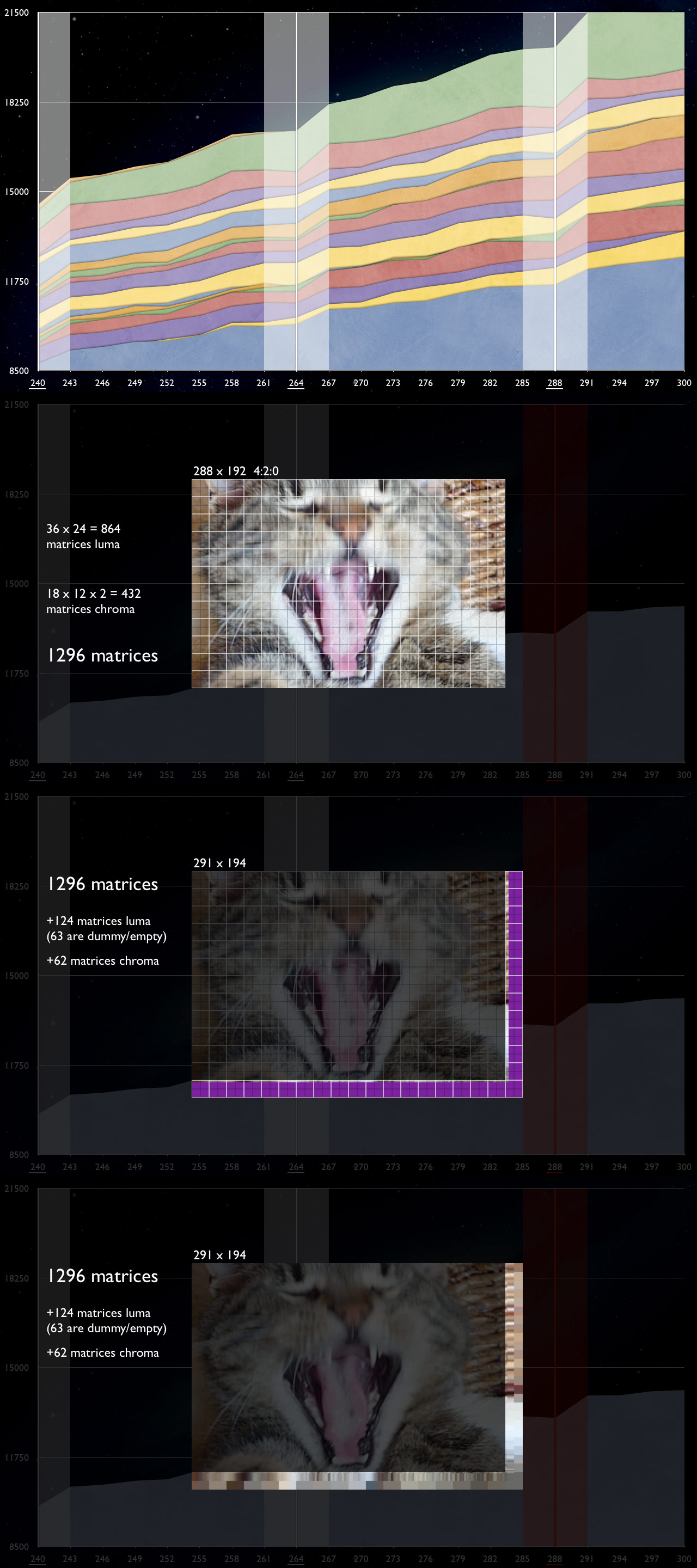- From: Jason Grigsby <jason@cloudfour.com>
- Date: Fri, 13 Sep 2013 11:47:34 -0700
- To: Frédéric Kayser <f.kayser@free.fr>
- Cc: "public-respimg@w3.org" <public-respimg@w3.org>
- Message-ID: <CADQU=pP+++sCW2c1ynp4eqEFFCp1BdLbksb6RqFh=xd4B+4s1A@mail.gmail.com>
It is likely they don't know anything about JPEGs work. Neither do I. And to be honest, I'm more confused now than I ever was. :-) I couldn't parse your email. I'm not sure where to start. MCUs? DCTs? On Fri, Sep 13, 2013 at 11:34 AM, Frédéric Kayser <f.kayser@free.fr> wrote: > Pardon by French, but apparently these people don't even have a clue of > how JPEG compression internally works: no word about chroma subsampling > effects and use of a 300x200 pixels image sample that doesn't fit nicely > into MCUs. > Here are a few explanations about it: > - the file size of about 20 images at different sizes ranging from 240x160 > to 300x200 pixels (resized using ImageMagick convert -resize XxY\! > -quality 76% -sampling-factor 2x2 -unsharp 1.5x1+0.7+0.02 —a rough > equivalent to Photoshop Save For Web quality 50—), notice the inflections > point around 240x160, 264x176 and 288x192, some images at 288x192 or > 264x176 weight even less than their 255x190 and 261x174 counterpart! > - a sample 288x192 image with its DCT matrices count > - the same at 291x194 where new DCT matrices have been added into the JPEG > file to hold the 3 extra columns and the 2 extra rows (now guess why the > file size made such a jump between 288x192 and 291x194) > - finally all the pixels the file holds in the outer matrices even those > out of the visible frame (JPEGsnoop<http://www.impulseadventure.com/photo/jpeg-snoop.html> can > display those but sadly only for sequential JPEGs). > > > Regards > -- > Frédéric Kayser > > > Le 13 sept. 2013 à 01:17, Jason Grigsby a écrit : > > Compressive images[1][2]. I love the idea and fear it at the same time. > > Love it because it would be oh so easy and awesome. Fear it because even > if the file size is smaller, I worry that a memory constrained UA would > have trouble decompressing images that contain four times the pixels. > > I do not know if this is a rational fear or if I am simply depriving > myself of the chance at a long term retina image love. > > So here's the question: > > If we wanted to construct a test that would definitively answer whether or > not compressive images are safe to use or not, what would that test look > like? > > -Jason > > [1] http://filamentgroup.com/lab/rwd_img_compression/ > [2] http://www.netvlies.nl/blog/design-interactie/retina-revolution > > > -- > +1 (503) 290-1090 o | +1 (503) 502-7211 m | http://cloudfour.com > > > -- +1 (503) 290-1090 o | +1 (503) 502-7211 m | http://cloudfour.com
Attachments
- image/jpg attachment: jpegforhorseshoecrabs.jpg

Received on Friday, 13 September 2013 18:48:22 UTC